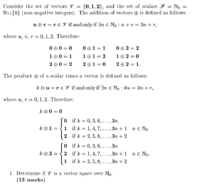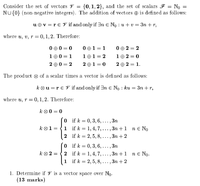
if u + v = 3n + r. Does that mean u = 3n and v = r?
To prove this is a vector space, you have to use the Axioms of a vector space.
[A1] Closure. The set is closed under addition
I am confused as how you would show this.
3n is an element of [MATH]N_0[/MATH] and r is an element of V. Therefore 3n + r is in V. Is this correct?

